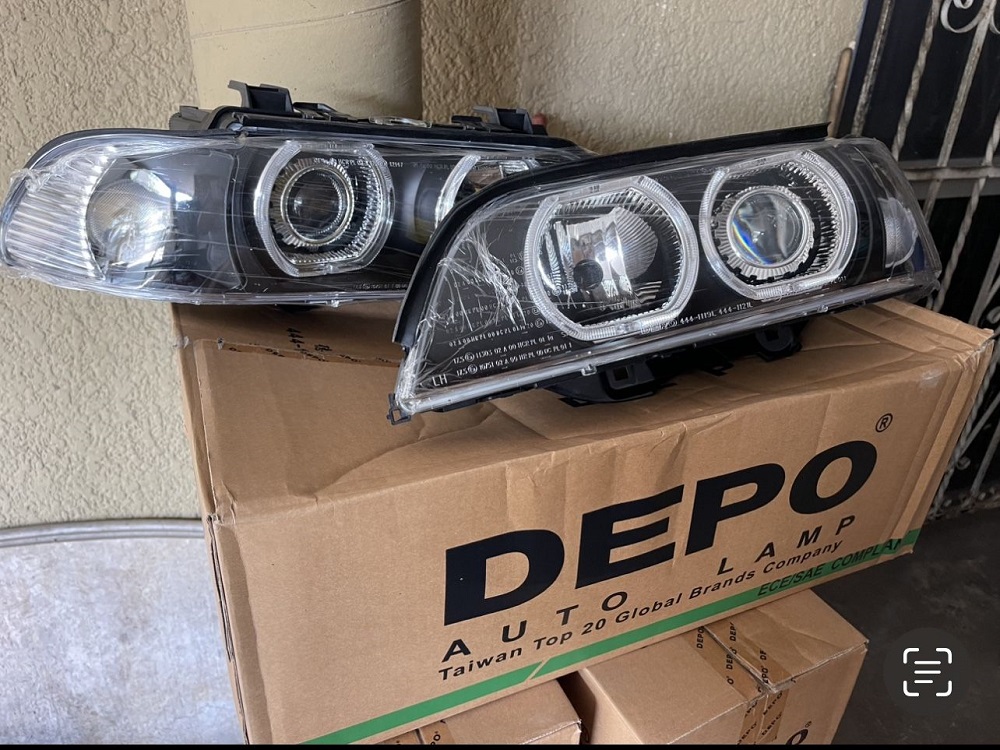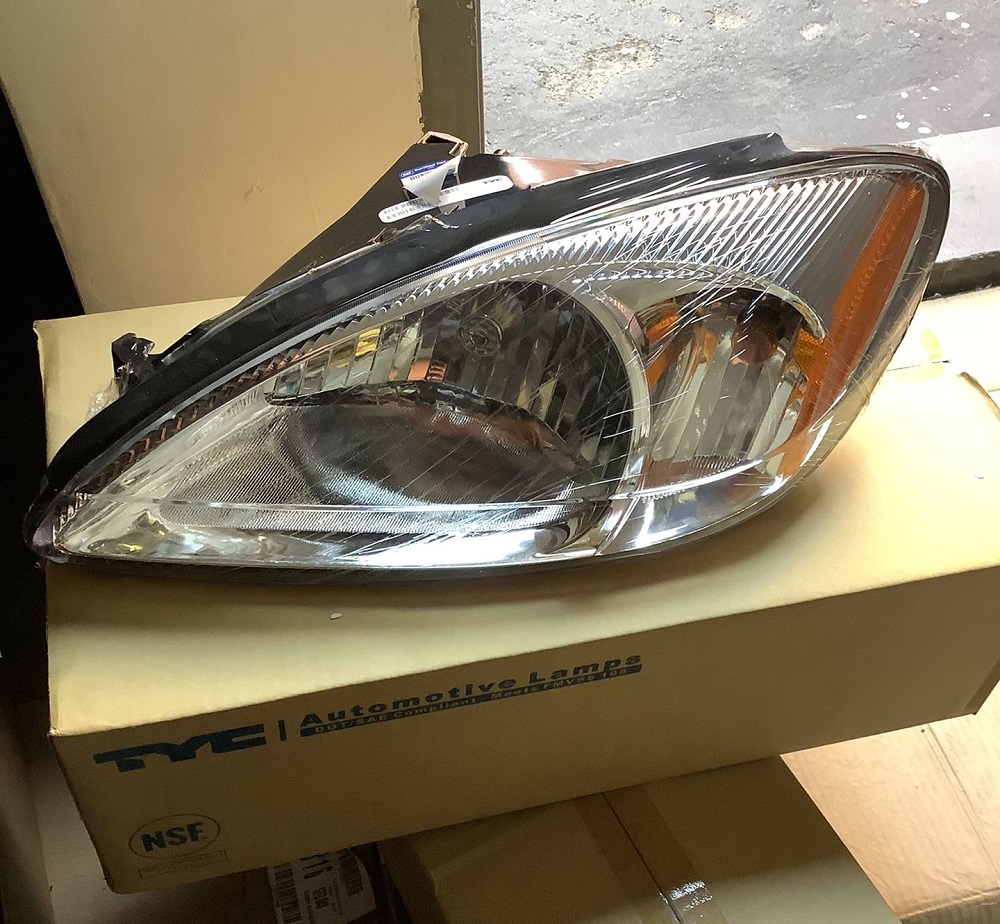Driving with dull or damaged headlights isn’t just annoying—it’s unsafe. Finding the right balance between cost and quality can be challenging when it’s time for a replacement.
DEPO and TYC offer reliable solutions, but which fits your needs? This guide will help you choose confidently, ensuring your car gets the headlights it deserves without overspending.

1. Brand and Manufacturing Overview
DEPO
DEPO began in Taiwan, focusing on vehicle lighting and mirror replacements. It has made a name for itself by providing products that resemble OEM styles, often at a more affordable price.
The company’s catalog covers a wide range of models, with a spotlight on headlights, taillights, and various mirror assemblies.
Quality control is generally decent, but minor fitment quirks might occur. Some reports mention slight gaps between the headlight housing and surrounding panels, particularly in older vehicles with prior bodywork.
Still, DEPO’s strengths are its affordability and ability to keep pace with many OEM designs, which make it popular among budget-conscious drivers.
TYC
TYC operates worldwide, supplying everything from radiator fan assemblies to replacement lights. Their headlights are commonly used in collision-repair shops because they aim to match the factory look without charging an arm and a leg.
Availability is another plus—many auto parts stores and online retailers carry TYC products for domestic and import makes.
Though TYC is usually praised for straightforward installation, a few owners have noted that lens clarity can vary. Some batches might show early signs of discoloration, possibly linked to UV exposure or less effective protective coatings.
However, their broad coverage makes it often easier to find a TYC headlight for a wide range of vehicles, including models from Toyota, Ford, Honda, and others.
2. Design and Construction Quality
DEPO
DEPO headlights typically use polycarbonate lenses chosen for their impact resistance and resemblance to factory clarity.
The housings often mirror OEM dimensions, so they generally align well with factory mounts. Since these lenses are meant to match the original shape, it’s easy to keep a factory look on most models.
Owners who’ve tried DEPO headlights sometimes mention condensation inside the lens, especially in regions with high humidity. The problem usually arises if the seal between the lens and housing isn’t tight.
UV exposure can cause yellowing or haze if the lens coating wears down over time. Therefore, having your lenses cleaned regularly and applying protective treatments occasionally is a good idea.
TYC
TYC also uses polycarbonate, and many of its headlight sets include UV protection to preserve clarity. Some models even arrive with bulbs pre-installed, which reduces installation steps. TYC’s consistent build quality is often praised, and buyers appreciate the straightforward fit.
Even so, a small number of TYC users report early signs of discoloration, hinting that certain batches may have weaker UV coatings. Sealing issues can also appear, although they don’t seem as widespread.
Routine checks to ensure gaskets and vents remain in good shape can help preserve beam quality and keep moisture at bay.
3. Fitment and Installation
DEPO
DEPO headlights usually align with factory mounting points. Owners say the setup is pretty close to stock, though slight gaps can appear around fenders or bumpers if the molding tolerance differs from the original specs. Body variations on older vehicles, like minor crash repairs, can make alignment tougher.
Some installers mention elongating mounting holes or adjusting brackets to achieve a snug fit. The housing finish might not match the exact shade or texture of the OEM headlight, which can be noticed when compared to the original. Still, for the price, most people consider these minor adjustments worth the savings.
TYC
TYC headlights typically earn compliments for near-OE fit right out of the box. Their catalog is broad, so they often stay updated with recent vehicle designs and measurements. This level of precision means you’re less likely to spend extra time adjusting brackets or shimming the headlight.
Most TYC assemblies align nicely and sometimes come with new bulbs or hardware. A few owners report minor misalignment, particularly those with uncommon vehicle trims. But generally, TYC is a reliable bet for installing headlights with minimal fuss.

4. Light Output and Beam Pattern
DEPO
DEPO aims to replicate the original beam design so that most owners find the light distribution adequate for daily driving. The reflectors or projectors often mirror OEM geometry, and the cutoff can be fairly close to the factory look.
Some users notice small differences in beam focus compared to stock units, which can lead to slight hot spots or dim areas. This effect might become more noticeable if higher-output bulbs are installed, so it’s wise to check adjustments and confirm everything is pointed correctly.
TYC
TYC headlights also strive for a factory-like beam pattern, though feedback varies by vehicle model. Many people say the light spread feels consistent, with a good balance between low-beam range and oncoming driver courtesy.
A few reviews mention some extra glare or scatter, which can happen if the internal reflectors don’t match stock specs perfectly. Swapping to premium bulbs or spending time on careful aiming helps smooth out any minor alignment concerns.
5. Price and Value Proposition
DEPO
DEPO headlights often cost well below the cost of genuine factory replacements. This advantage makes them a top pick for people who want to restore decent light output and appearance without breaking the bank.
Many budget-minded drivers appreciate that they can buy a full set of headlights for less than the cost of a single OEM unit.
On the other side, some owners discover that cheaper headlights might need a bit of upkeep over time, such as sealing edges or applying extra UV protection to help the lens resist yellowing. If you’re comfortable doing some maintenance work, the savings can be worth it.
TYC
TYC’s price range varies by vehicle, but they generally stay under OEM pricing and still deliver a product most users find reliable.
Some models cost slightly more than DEPO, reflecting TYC’s attempts at consistent build quality and better materials in certain batches.
For many drivers, this balance between affordability and dependable performance feels like a happy medium. Still, if you’re looking for the absolute lowest cost, you might prefer DEPO. If you’d instead lean on a brand with fewer reported quality fluctuations, TYC could be a better bet.
6. Common Complaints and Negatives
DEPO
Some drivers find DEPO’s sealing inconsistent, leading to condensation under humid conditions. Small gaps around the lens or vents can cause this.
A few owners also mention quicker-than-expected hazing or discoloration if the UV coating wears off. Warranty assistance varies, especially when parts are purchased through third parties, leaving some buyers to handle replacements on their own.
TYC
Occasional stories about early lens fogging or internal moisture crop up with TYC, though they seem less frequent than with some budget brands. Other complaints center on lens clarity declining sooner than anticipated, suggesting certain production runs may have weaker UV coatings.
While most installers appreciate TYC’s fit, a small percentage note minor misalignment, hinting that older or less common models can pose challenges.
7. Ideal Use Cases
Why You Might Pick DEPO
DEPO’s low price often stands out to drivers working with a tight budget, especially if they need a quick fix for a damaged headlight on a daily commuter. Many of their products closely imitate the original look, so casual onlookers won’t notice any difference.
If you are willing to perform small maintenance tasks—like sealing edges or adding a protective coating—you can extend the lifespan of DEPO’s lenses and get decent value for your money.
Why You Might Pick TYC
TYC generally caters to folks who want a balance of cost and consistency. Their headlights usually fit well, cutting down on the hassles of adjustments or bracket tweaks.
While TYC units can cost slightly more than some DEPO options, many buyers appreciate the wider availability, fewer random quality dips, and less frequent moisture problems.
If you prefer a headlight that bolts on easily and won’t need much touch-up over time, TYC might be the smarter pick.
Final Thoughts
If you’re after affordability and don’t mind a little extra care, DEPO offers a practical way to restore your headlights without breaking the bank.
On the other hand, TYC provides a more polished experience, reliable fit, and consistent performance, making it worth the slight price bump.
Both brands deliver solid alternatives to OEM replacements, so the choice ultimately depends on your priorities—stretching your budget or enjoying hassle-free installation.
Was This Article Helpful?

